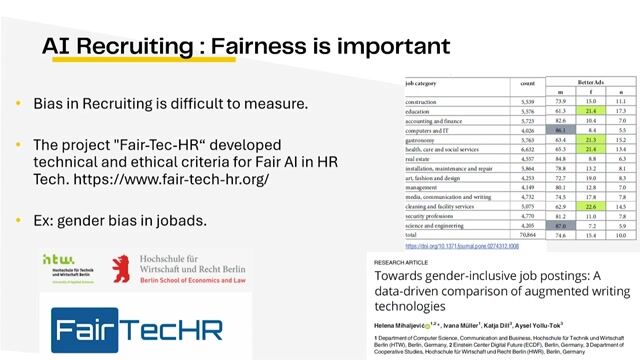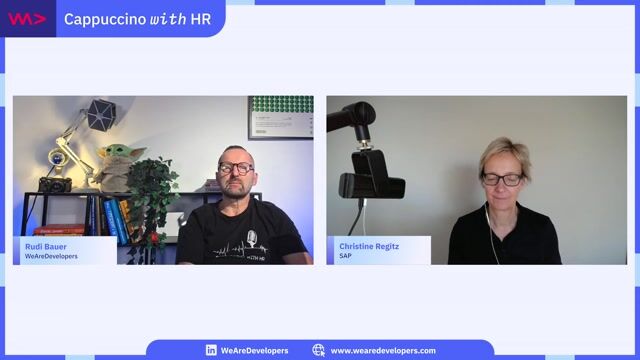Research Software Engineer (all genders) AI & Earth System Modelling
Role details
Job location
Tech stack
Job description
As this is a newly created position within natESM, your exact responsibilities will evolve with your expertise and interests. You will work closely with scientists and other RSEs to identify needs, develop solutions, and establish sustainable workflows. Depending on your background, your focus may include some of the following areas:
- Support users by integrating AI methods into modelling or data-driven workflows, e.g. for statistical downscaling, bias correction, research discovery or quality improvement.
- Develop and maintain robust, reproducible pipelines for data processing (xarray, netCDF/Zarr, Dask).
- Collaborate with scientists on experiment design, data curation, benchmarking and model evaluation.
- Implement and optimise ML models (e.g. emulators or parameterisations) and workflows (AI ready data handling) on HPC systems (e.g., PyTorch or JAX, and more).
- Contribute to training and capacity-building activities within the natESM community.
- Engage actively with the community to identify needs, promote exchange, and shape collaborative development of AI-enabled tools.
- Follow new developments in AI and Earth system science to continuously improve our methodological toolbox.
Your profile
We are aware that this role can be approached from different backgrounds. Depending on your experience, your focus may lie in one of two complementary directions:
- Data-driven Earth System Modelling - applying ML methods to analyse, interpret and evaluate ESM data.
You are familiar with approaches such as statistical downscaling, bias correction or model validation, and with the tools and libraries commonly used in the field (xarray, netCDF, Zarr). You enjoy exploring data and developing AI methods that enhance scientific insight.
- AI Engineering at Scale - developing and optimising scalable ML workflows and models for scientific applications. You are skilled in frameworks like PyTorch or JAX, and can translate scientific ideas into efficient software solutions.
Few candidates will cover both profiles in full - we welcome applications from those who bring depth in one and curiosity about the other., * A creative role at the intersection of AI, HPC and climate research - where you can shape new infrastructures and methods.
- Collaboration with a diverse team of RSEs and scientists across Germany and Europe.
- Access to state-of-the-art HPC systems and one of the world's largest climate data archives.
- Opportunities to engage directly with the natESM community, explore their needs and translate them into practical, scalable solutions.
- Participation in natESM training, workshops, and community events.
- Continuous learning, conference participation, and international networking.
Employment conditions
We offer work in interdisciplinary teams and excellent connections to national and international research networks. In addition to specific implementation and support requirements from our users and project partners, your work will be characterised by the freedom to work creatively at the interface between applied computer science and the development of scientific applications. Participation in international conferences, project meetings and hackathons enable further training and presentation of your own results., The position is initially limited to two years, with the option of further two years following a successful review by the funding body.
Requirements
Do you have a Master's degree?, You will also collaborate with scientists, model developers and data specialists from different institutions to understand their needs, identify opportunities for AI integration, and develop practical solutions. Strong communication skills and curiosity for interdisciplinary exchange are essential, as your work will connect diverse perspectives and communities., * Academic degree (Master's, Diploma or PhD) in computer science, physics, mathematics, climate science, or a related field.
- Proven experience in practical ML development (Python, PyTorch, TensorFlow, or JAX).
- Strong software-engineering skills (Git, testing, CI/CD, documentation).
- Experience in handling large datasets in formats such as netCDF/Zarr using xarray or similar libraries.
- Excellent communication skills and proficiency in English.
Desirable skills
- Familiarity with methods for statistical downscaling, bias correction, and data assimilation.
- Experience with emulator or parameterisation training and evaluation on GPUs.
- Knowledge of workflow optimisation, profiling, and scalable data processing (Dask, Ray).
- Interest in collaborative software development, data standards, and open-source practices.










